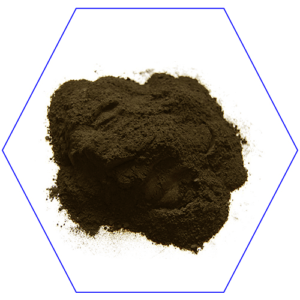Graphene structure explained
Graphene structure is one of the most interesting aspects of the new, carbon-based addition into super-materials.
So how is graphene structured?
Graphene is a one atom-thick layer of carbon atoms and since it’s one atom-thick, each sheet of graphene can be considered a single molecule.
The atoms form the hexagonal shapes of benzene rings and are bound together covalently (sp2 hybridized); while the sheet as such is held together by van der Waals electrostatic force. Due to negligible thickness, graphene can actually be considered a two-dimensional material.
The sp2 hybridization is not typical for non-metals. This is not an accident, albeit being a non-metal, graphene has many properties of metals. Due to its semi-conductive properties, graphene is sometimes classified as a quasi-metal.
Each carbon atom is bound to three other carbon atoms. This property makes graphene ideal for mixing with other materials, as carbon can theoretically bind four atoms in total. Beyond its propensity to bind, graphene is a sensible material for use in composites. It has high tensile strength, is elastic and conductive to electricity.
Electrical properties
Graphene has the highest electron mobility of all known materials. Of course, this suggests it as a possible substitute for silicon-based transistors. Beyond its high conductivity, the flexibility of graphene structure also comes into play.
Unlike silicon, graphene can be curved or “rolled up”, adding new space to the chip in the third dimension. For this reason, graphene-based computing can sidestep the architectures based on silicon and explore new higher-dimensional avenues.
The challenge of electrical properties is the lack of an electrical band gap, which would allow for on/off switching. Solving it is the necessary step toward graphene transistors.
-
CVD graphene film on a silicon substrate with flint oxide
37 € – 519 € Select options -
Graphene paste
13 € – 152 € Select options -
Graphene powder
Read more -
CVD graphene film on copper substrate
19 € – 1,377 € Select options -
CVD graphene film on a 2mm quartz substrate
37 € – 519 € Select options -
Graphene oxide
69 € – 17,744 € Select options -
CVD graphene on customers substrate
15 € – 28 € Select options -
CVD graphene on PET film 100um
37 € – 519 € Select options
Graphene structure - sheets and three-dimensional structures
What are graphene products like?
Graphene’s flexibility and specific properties allow for the production of graphene-based products on molecular level. At this time, there are two best known graphene products, the buckminsterfullerenes (termed buckyballs for short) and nanotubes.
Buckyballs are football-like structures made of one atom-thick carbon layers. Unlike graphene, their structure introduces a third dimension.
Nanotubes are made by rolling up graphene sheets into tube-like shapes. Their application varies from flexible conductive parts (smaller ones) to tubing-like applications in medicine (for transport of certain molecules within them, the large ones).
Comparing the surfaces of carbon allotropes
These graphene-based products are referred to as allotropes. Of course, there are more carbon allotropes than just the graphene-based group; however the focus will be solely on products with a graphene structure.
Graphene sheets’ two-dimensionality lends their surface an unusual quality – each atom is a surface from two sides. This structure allows for high reactivity, especially since the carbon can bind a fourth outstanding atom.
Nanotubes are graphene sheets tightly rolled up into cylindrical tubes; making a single surface with protected interior. This allows for the aforementioned transfer of electricity or molecules.
Buckyballs’ spherical shape cuts the sheet graphene’s surface to just one dimension; the other is within the sphere. Since buckyballs aren’t soluble, except for a limited range of solvents, they can be used to transfer smaller molecules within them (like an egg).










